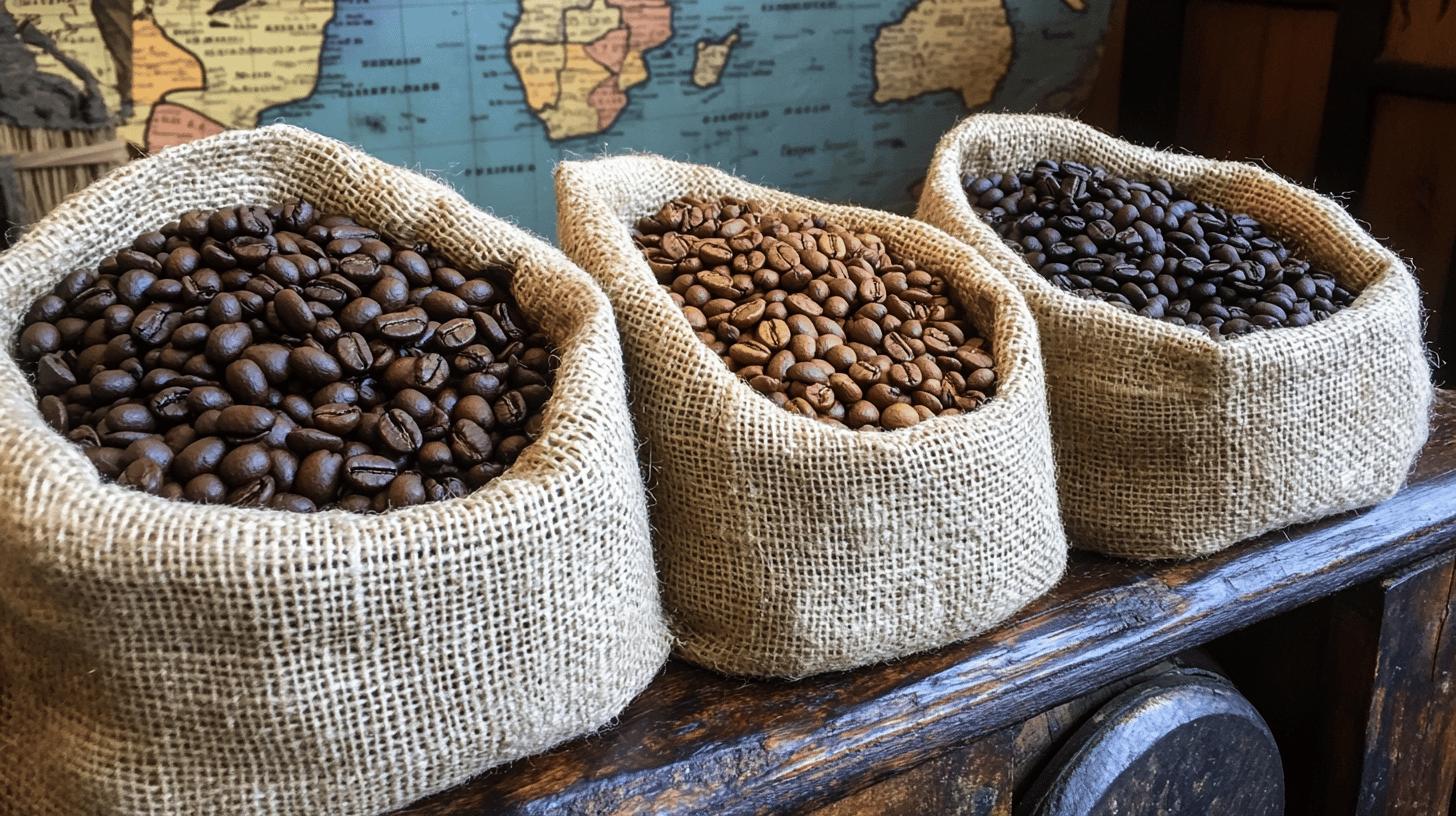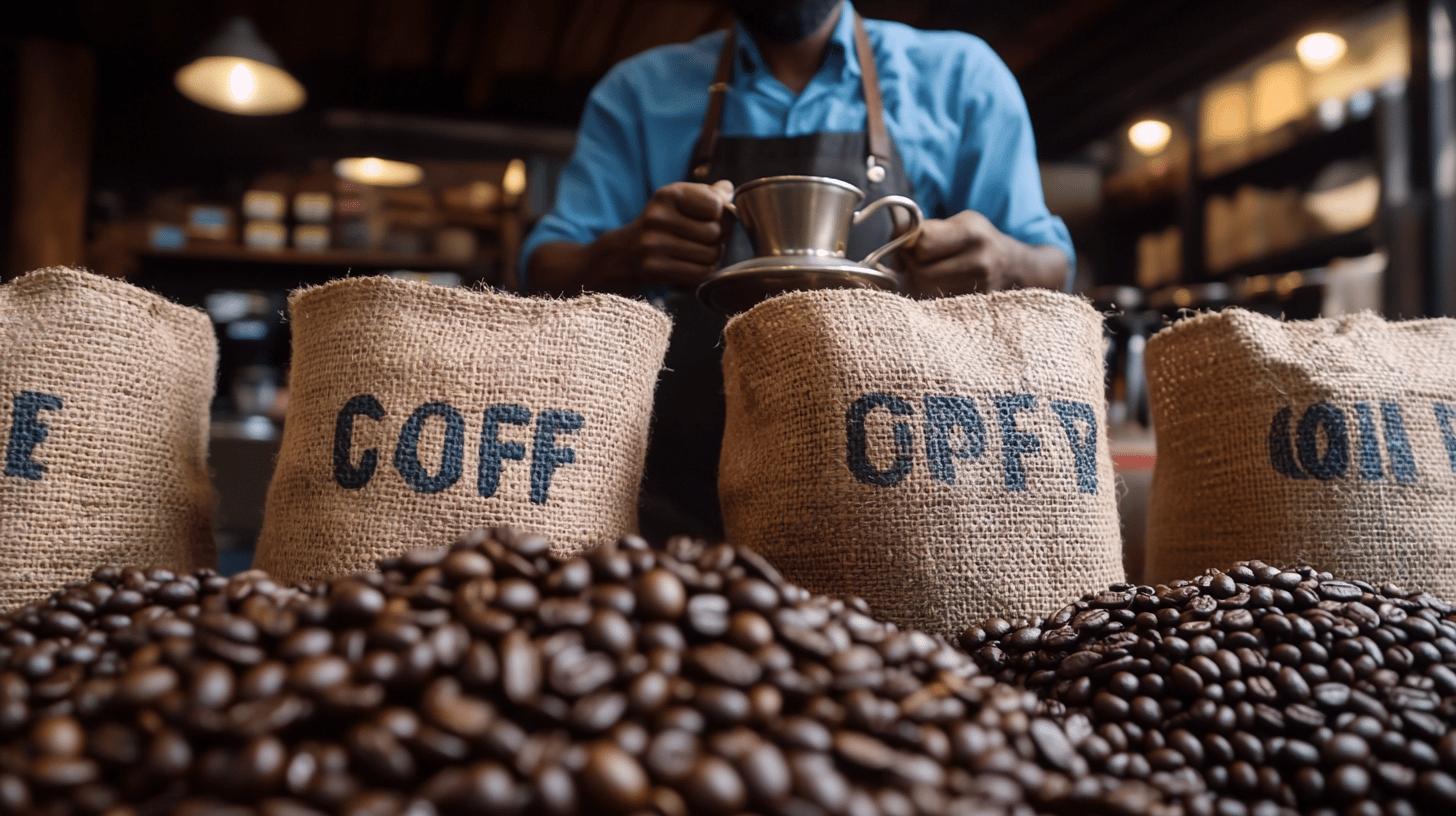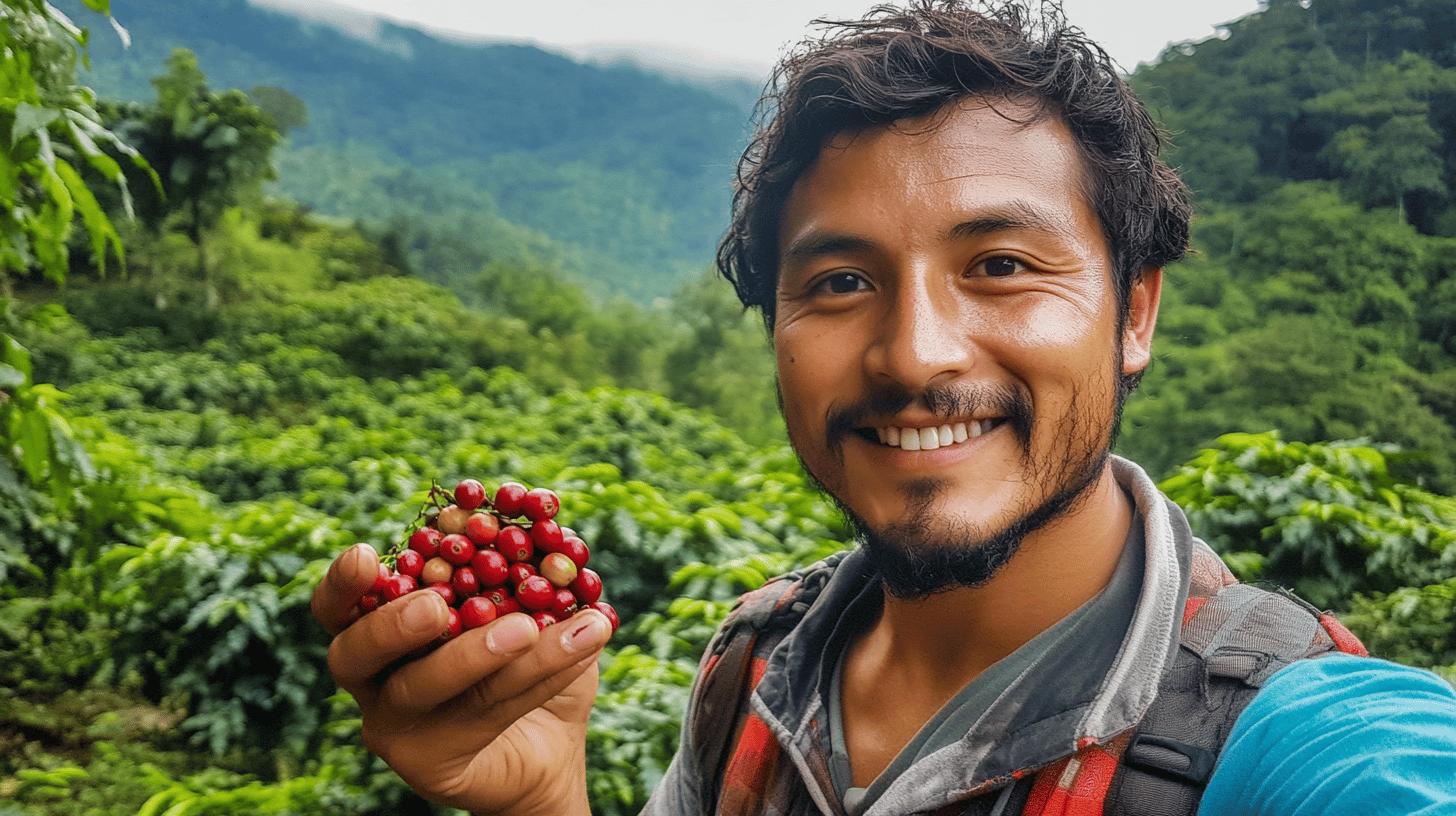Have you ever wondered why your coffee tastes so distinct? The answer lies in the geography of where it's grown. From rich, fruity Ethiopian beans to the earthy notes of Indonesian coffee, each region imparts unique flavors to its beans. This journey through the coffee regions of the world will unveil the secrets of the "Coffee Belt" and introduce you to the diverse and fascinating flavors cultivated within this prime coffee-producing zone. Discover how geography shapes your morning cup and take your appreciation of coffee to a whole new level.
The Coffee Belt: Where Coffee Thrives
The "Coffee Belt" or "Bean Belt" is a prime coffee-growing region that spans between 25° North and 30° South of the equator. This area includes parts of South America, Central America, Africa, Southeast Asia, and Oceania. These regions are ideally suited for coffee cultivation due to their geographical location, which provides the necessary climate and environmental conditions for coffee plants to thrive.
Ideal growing conditions within the Coffee Belt include tropical and subtropical climates, elevations ranging from 800 to 2,200 meters above sea level, specific light levels, consistent warmth, and adequate rainfall. These factors collectively contribute to the development of high-quality coffee beans with diverse and unique flavor profiles, making the Coffee Belt the most crucial region for global coffee production.
| Region | Conditions |
|---|---|
| South America | Tropical climate, high altitudes, consistent rainfall |
| Central America | Subtropical climate, moderate to high altitudes, balanced seasonal rainfall |
| Africa | Varied climates, high altitudes, diverse soil types |
| Southeast Asia | Humid tropical climate, lower altitudes, heavy seasonal rainfall |
Coffee Regions of Latin America
Central America is a renowned coffee-producing region, known for its high-quality beans that offer well-balanced and bright flavors. The top coffee producers in this area include Guatemala, Costa Rica, Honduras, Nicaragua, Panama, and El Salvador. These countries are celebrated for their medium-acidity coffee, which is often characterized by fruity and floral notes. The diverse microclimates, fertile volcanic soil, and high altitudes contribute significantly to the unique profiles found in Central American coffee.
South America, particularly Brazil and Colombia, stands out as one of the world's largest coffee-producing regions. Brazil is the leading coffee producer globally, known for its vast plantations and diverse variety of beans, including both Arabica and Robusta. Brazilian coffee often has a nutty, chocolatey flavor with a heavy body. Colombia, another major contributor, is famous for its high-quality Arabica beans that offer bright acidity, a smooth body, and a rich flavor profile. Ecuador and Peru also produce specialty coffees, with Ecuadorian beans known for their floral and fruity characteristics and Peruvian beans offering a complex, sweet, and aromatic cup.
Latin American coffees are distinguished by their unique flavor profiles and production methods. The high altitudes and favorable climates in these regions provide ideal conditions for coffee cultivation, resulting in beans with exceptional qualities. Production methods in Latin America typically involve meticulous hand-picking and traditional processing techniques that preserve the integrity and flavor of the beans, ensuring a high-quality product that coffee enthusiasts worldwide appreciate.
- Guatemala: Bright acidity, full-bodied, chocolate and spice notes
- Costa Rica: Clean, balanced, citrus and fruit flavors
- Honduras: Mild acidity, sweet, nutty, and chocolatey
- Nicaragua: Bright, fruity, floral, with a medium body
- Panama: Bright acidity, complex, floral, and fruity flavors
- El Salvador: Smooth, mild acidity, chocolate, and nutty notes
Coffee Regions of Africa

Ethiopia, the birthplace of coffee, offers a diverse range of unique flavors that are cherished worldwide. Ethiopian coffee is celebrated for its sweet fruit notes, citrus undertones, and floral aromas, creating a balanced and complex flavor profile. The country's diverse microclimates and high altitudes contribute to the distinct characteristics of its coffee. Regions like Sidamo, Yirgacheffe, and Harrar are particularly renowned, each producing beans with unique flavor profiles that reflect their specific growing conditions. Ethiopian coffee often showcases a delightful combination of bright acidity and full-bodied richness, making it a favorite among coffee aficionados.
Kenya and Tanzania are also significant players in Africa's coffee production landscape. Kenyan coffee, primarily grown at the foothills of Mount Kenya, is known for its bright acidity and full body. The beans often exhibit fruity notes, such as blackcurrant and berry, accompanied by a wine-like finish. This distinct flavor profile is a result of the country's fertile volcanic soil, suitable altitude, and meticulous processing methods. In Tanzania, coffee production is concentrated around the slopes of Mount Kilimanjaro and Mount Meru. Tanzanian coffee is prized for its complex acidity and fruity flavors, often featuring hints of red fruit, wine, and citrus. The unique growing conditions in these regions, coupled with traditional farming practices, contribute to the outstanding quality and distinctive taste of Tanzanian coffee.
- Ethiopia: Sweet fruit notes, citrus, floral aromas, balanced flavor
- Kenya: Bright acidity, full body, fruity notes like blackcurrant and berry
- Tanzania: Complex acidity, fruity flavors, hints of red fruit, wine, and citrus
Coffee Regions of Asia and Oceania
Southeast Asia is a significant hub for coffee production, particularly known for its Robusta beans, which are characterized by their bold and earthy flavors. Indonesia is one of the top producers in this region, offering a wide range of coffee varieties, including the famous Sumatran coffee, which is known for its full body and low acidity with notes of chocolate and spice. Vietnam is another major player, primarily producing Robusta beans that contribute to the country being the largest exporter of this variety. The Philippines, Laos, and Papua New Guinea also contribute to the region's coffee production, with the Philippines and Laos focusing on both Arabica and Robusta beans, each offering unique flavor profiles influenced by their local climates and soil conditions.
Oceania, particularly Papua New Guinea, also plays a crucial role in the global coffee market. Papua New Guinea is renowned for its high-quality Arabica beans that flourish in the country's high-altitude regions. The coffee from this area is often noted for its bright acidity, fruity flavors, and complex aromatics. The unique microclimates and traditional farming practices in Papua New Guinea contribute to the distinctive characteristics of its coffee, making it highly sought after by coffee enthusiasts around the world.
- Indonesia: Full body, low acidity, notes of chocolate and spice
- Vietnam: Bold, earthy, primarily Robusta beans
- Philippines: Diverse flavors, both Arabica and Robusta beans
- Laos: Unique local profiles, both Arabica and Robusta beans
- Papua New Guinea: Bright acidity, fruity flavors, complex aromatics
Factors Affecting Coffee Flavors
Coffee flavor profiles are heavily influenced by the growing region, with key factors including soil type, climate, and altitude playing pivotal roles. Soil type can impart distinct mineral characteristics to the beans; for instance, volcanic soil often results in rich, complex flavors. Climate conditions, such as temperature and humidity, affect the growth rate and development of coffee cherries. High-altitude regions generally produce beans with higher acidity and more vibrant flavors due to slower maturation and cooler temperatures. Thus, the unique combination of soil, climate, and altitude in each coffee-growing region creates a diverse array of flavor profiles.
Regional coffee-production processes further shape the final taste of the coffee. In Africa, traditional methods like natural processing, where beans are dried with the fruit still attached, enhance fruity and floral notes. Latin American countries often use washed processing, which involves removing the fruit before drying, leading to cleaner, brighter flavors. Southeast Asian regions frequently employ wet-hulled processing, contributing to the bold and earthy characteristics of their coffee. These varied methods highlight the regional differences and significantly impact the flavor profiles of coffee.
- African coffee: Fruity and floral notes
- Latin American coffee: Well-balanced and bright flavors
- Southeast Asian coffee: Bold and earthy characteristics
Specialty Coffee and Single-Origin Coffees

Specialty coffee refers to high-quality coffee beans that are cultivated under optimal conditions to achieve superior taste and aroma. These beans are often single-origin, meaning they come from one specific location, whether it be a single farm, a particular region, or even a distinct lot within a farm. Single-origin coffees are prized for their unique flavors, which reflect the terroir—the specific combination of soil, climate, and altitude—of their place of origin. This distinctiveness allows coffee enthusiasts to experience and appreciate the diverse flavor profiles that different regions have to offer.
Renowned regions for specialty coffees include Ethiopia, Colombia, and Guatemala. Ethiopia is often celebrated as the birthplace of coffee, producing beans with remarkable complexity, featuring floral, fruity, and wine-like notes. Colombia is known for its meticulously cultivated Arabica beans that offer bright acidity, a smooth body, and a rich, balanced flavor. Guatemala, with its diverse microclimates and volcanic soils, produces coffee with a rich, full body and vibrant acidity, often showcasing chocolate and spice notes. These regions are recognized for their dedication to quality, making them key contributors to the world of specialty coffee.
- Ethiopia: Complex flavors with floral, fruity, and wine-like notes
- Colombia: Bright acidity, smooth body, rich and balanced flavor
- Guatemala: Rich, full body, vibrant acidity, chocolate and spice notes
Coffee Cultivation Practices Around the World
Coffee cultivation practices differ significantly across the globe, shaped by each region's unique climate, soil, and cultural traditions. In Latin America, traditional methods often involve shade-grown coffee, where coffee plants are grown under a canopy of trees. This practice helps in maintaining the biodiversity of the region and provides natural pest control. In Africa, particularly in Ethiopia, coffee cultivation is deeply rooted in cultural heritage, with smallholder farmers using age-old techniques that include intercropping coffee with other crops to enhance soil fertility and reduce erosion. Southeast Asia is known for its wet-hulled processing method, particularly in Indonesia, which imparts a distinctive earthy flavor to the beans. Each region's approach to coffee farming reflects its environmental conditions and cultural practices, contributing to the diverse flavor profiles found in coffees worldwide.
Sustainable coffee farming has become increasingly vital as the industry seeks to reduce its environmental footprint. Several regions have implemented practices aimed at promoting sustainability and improving the livelihoods of coffee farmers. Central America is at the forefront of sustainable coffee cultivation, with many farms adopting organic farming techniques and certification programs like Fair Trade and Rainforest Alliance. In Africa, initiatives to improve water conservation and soil health are gaining traction, helping to mitigate the impacts of climate change. Southeast Asian countries are also embracing sustainability, with efforts to reduce deforestation and promote agroforestry systems that support both coffee production and biodiversity. These sustainable practices not only protect the environment but also ensure the long-term viability of coffee farming.
- Central America: Organic farming techniques, Fair Trade, Rainforest Alliance certifications
- Africa: Water conservation, soil health initiatives
- Southeast Asia: Reduction of deforestation, promotion of agroforestry systems
- Latin America: Shade-grown coffee, intercropping methods
The Influence of Climate Change on Coffee Regions
Climate change is significantly impacting traditional coffee-growing regions, altering the conditions required for optimal coffee cultivation. Increased temperatures are making some areas too hot for coffee plants, which thrive in specific temperature ranges. This phenomenon is pushing coffee cultivation to higher altitudes where the climate remains cooler and more stable. However, this shift comes with its own set of challenges, including limited available land at higher elevations and increased susceptibility to pests and diseases. Additionally, the changing climate disrupts rainfall patterns, leading to irregular flowering and fruiting cycles, which affect both the yield and quality of coffee beans. These adverse effects necessitate changes in farming practices and result in increased costs for coffee producers.
In response to these challenges, coffee farmers and researchers are adopting various adaptation strategies to mitigate the impact of climate change. One primary approach is the development of more resilient coffee varieties that can withstand higher temperatures and variable climatic conditions. For example, hybrid coffee species are being cultivated for their resistance to diseases and ability to thrive in less-than-ideal conditions. Additionally, farmers are employing innovative agronomic practices such as shade-grown coffee, which helps to regulate temperature and conserve moisture. Agroforestry, which integrates coffee plants with other tree species, is also gaining popularity as it enhances biodiversity and provides natural pest control. These strategies are crucial for ensuring the sustainability of coffee production in the face of a changing climate.
- Hybrid Coffee Varieties: Developed for disease resistance and ability to thrive in varying conditions
- Shade-Grown Coffee: Helps to regulate temperature and conserve moisture
- Agroforestry: Enhances biodiversity and provides natural pest control
Final Words
In the action, this blog post detailed the significance of the Coffee Belt and its ideal growing conditions, offering insight into the primary coffee regions in Latin America, Africa, Asia, and Oceania.
It also covered how these regions' specific climates, soil types, and cultivation practices contribute to the unique flavors of their coffees. Lastly, the impact of climate change and sustainable farming practices were discussed.
Understanding the coffee regions of the world enriches one's appreciation for the diverse and intricate flavors found in each cup. Embrace this knowledge to enhance your coffee experience, savoring every sip.
FAQ
What are the global coffee regions?
Coffee is primarily grown in the "Coffee Belt," spanning between 25° North and 30° South of the equator. This includes parts of South America, Central America, Africa, Southeast Asia, and Oceania.
Which region has the best coffee in the world?
While taste is subjective, regions such as Ethiopia, Colombia, and Guatemala are often cited for producing some of the best coffee due to their ideal growing conditions and unique flavor profiles.
What are the three main coffee-growing regions?
The three main coffee-growing regions are Latin America, Africa, and Southeast Asia & Oceania. Each region produces coffee with distinct flavors and profiles.
Which region is famous for coffee?
Ethiopia is particularly famous for its coffee, known for its fruity, floral aromas and balanced flavors. Other notable regions include Colombia and Brazil.

